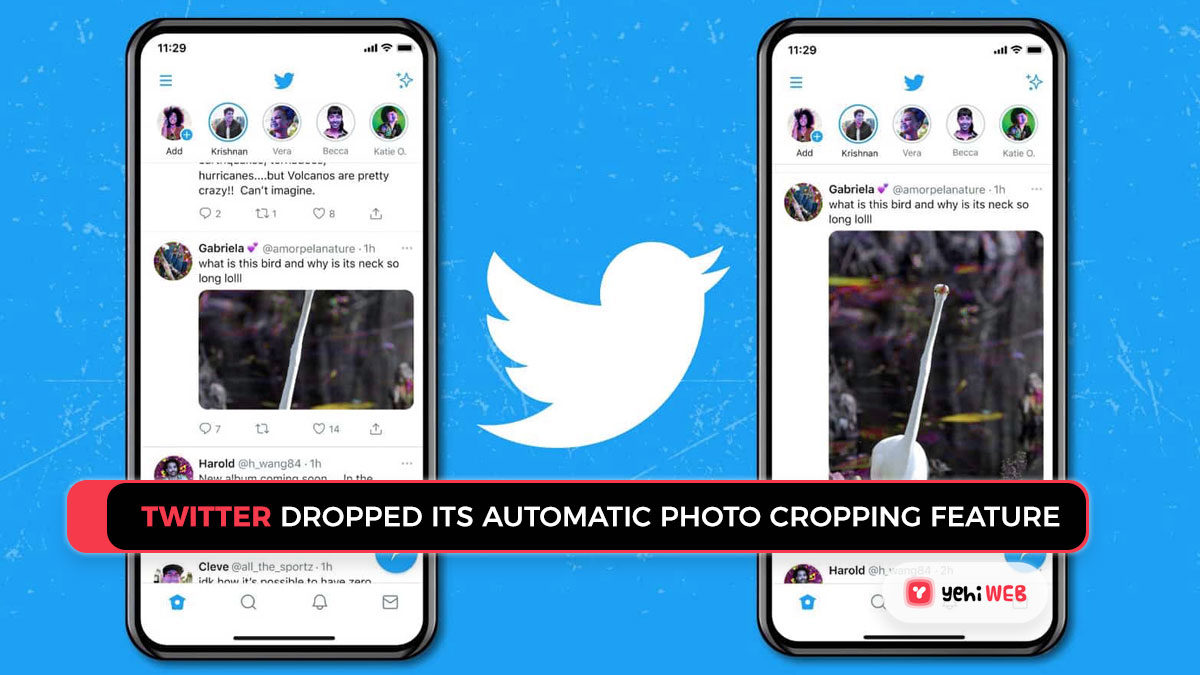Twitter dropped its automatic photo cropping feature on its platform nine months after receiving complaints that the service cropped out Black faces from images.
Twitter dropped its automatic photo cropping feature
Last September, some Twitter users noticed that when they shared a photo with both a Black and a White person, the feature often cropped the Black person out of the image in the preview. Twitter said at the time that it had thoroughly evaluated the image preview cropping algorithm before its launch and found no biases. “We’ve got more analysis to conduct,” it eventually conceded.
By eliminating automatic cropping, Twitter aims to provide users with a more authentic photo cropper visual experience, allowing them to share complete images without the constraints of predefined dimensions. This change enhances the platform’s commitment to visual storytelling and encourages users to express themselves more freely through unaltered photos.
Twitter users were right, as it turned out. According to Twitter’s director of software engineering Rumman Chowdhury, the algorithm that powers the artificial intelligence behind the image-cropping feature revealed: “unequal treatment depending on demographic differences.”
Twitter researchers discovered that the crop tool preferred White people over Black people by 4%, White women over Black women by 7%, and White men over Black men by 2% after uploading hundreds of photographs to the platform. Twitter undertook the trial, according to Chowdhury, to see if the cropping feature allowed users to control how their photographs were cropped.
“One of our conclusions is that not everything on Twitter is a good candidate for an algorithm,” Chowdhury said in her post. “In this case, how to crop an image is a decision best made by people.”
Users on Twitter can view photographs in their entirety when they are posted, thanks to a change introduced earlier this month.
Today we’re launching a test to a small group on iOS and Android to give people an accurate preview of how their images will appear when they Tweet a photo. pic.twitter.com/cxu7wv3Khs
— Dantley Davis (@dantley) March 10, 2021
According to Twitter’s analysis, the image-cropping tool in some cases focused on women’s chests and legs. Chowdhury said her team tested the trend on a more significant number of images but couldn’t uncover a statistically significant difference.
The cropping tool was designed to allow users to quickly view a snapshot version of a photo while they browsed through their timeline. After clicking the cropped image’s center, the user may see the entire picture.
READ MORE
‘Zoom fatigue’ is real,
Twitter started utilizing the crop tool in 2018, according to Chowdhury, as a method to standardize the size of photographs shared and maximize the number of pictures users can see on their timeline. A saliency algorithm, a predictive model that tries to forecast what someone would prefer to view first in an image, was used to power the tool. We used data from human eye-tracking research to create the saliency algorithm.
In September, Colin Madland, a White doctoral student in Canada, stated that Twitter cut out the left part of a photo with an image of a Black colleague, only showing the right side of the shot on preview, which contained Madland’s face.
Saad Shafqat
Related posts
New Articles
How to Sell on OfferUp: Step-by-Step Guide
Got stuff lying around your house? Want to turn it into cash? OfferUp is a great way to get started!…


